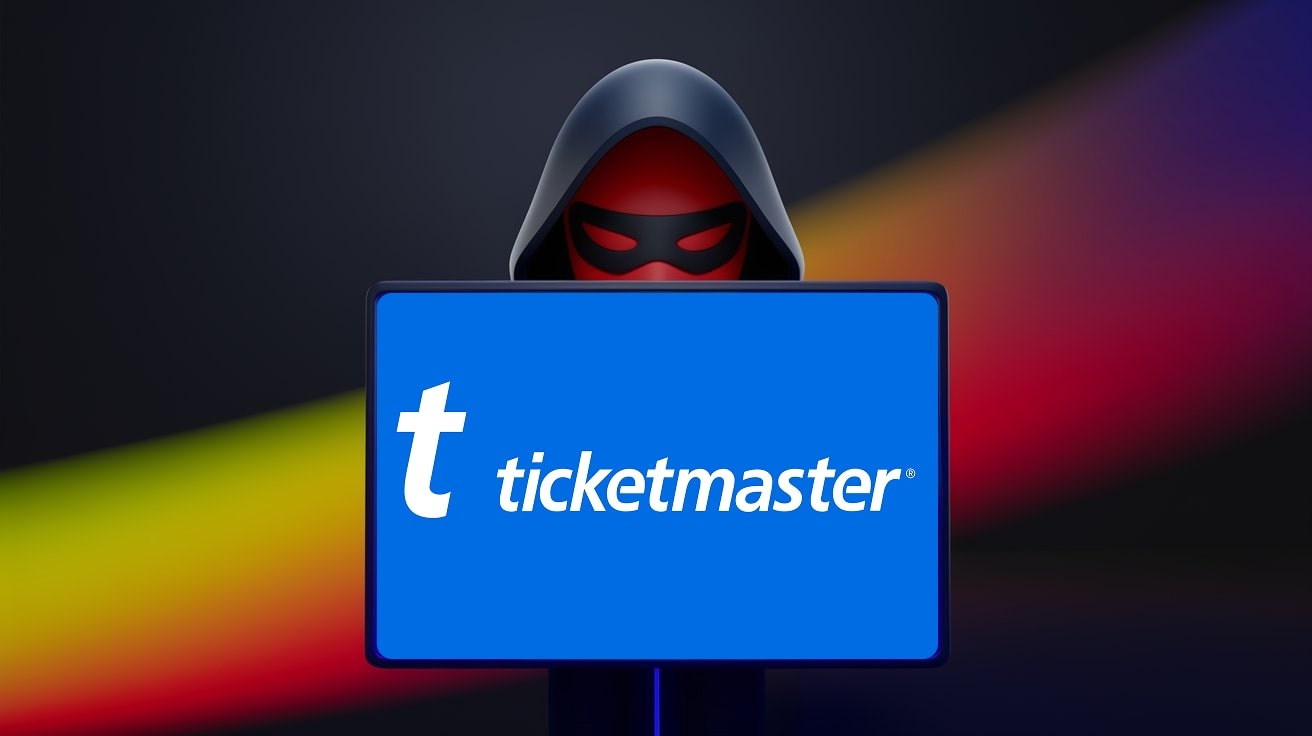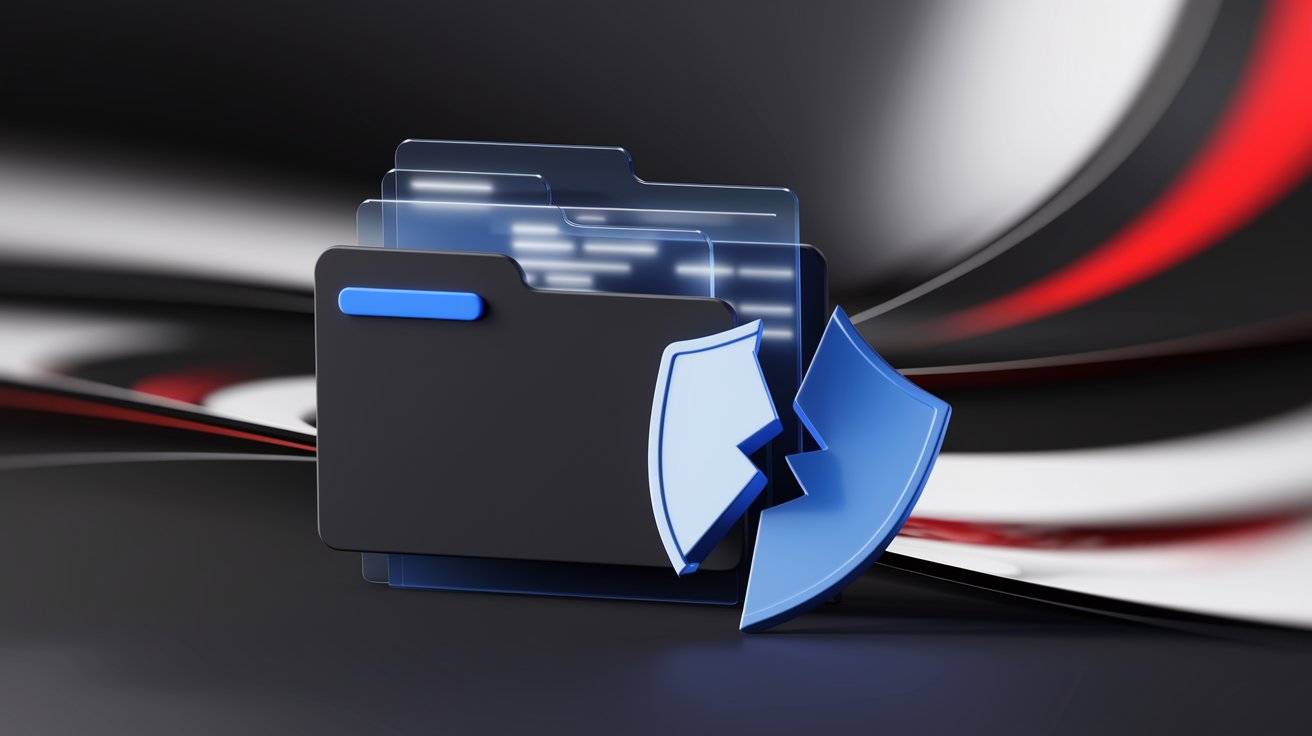TL;DR
The May 2024 Ticketmaster data breach (a subsidiary of Live Nation Entertainment) is one of the largest consumer data incidents in history.
Here’s the short version:
- In 2024, attackers broke into a cloud database used by Ticketmaster via a third-party provider and allegedly stole personal data on hundreds of millions of users (full names, emails, phone numbers, physical addresses, ticket order histories, and payment‑related data).
- The incident became public on May 27, 2024, when the threat actor ShinyHunters offered approximately 560 million customer records (1.3 TB) for sale on the dark web for $500,000 USD.
- The cause was a stolen password for a third-party cloud account (Snowflake) that didn't have basic Multi-Factor Authentication (MFA).
- For users, the fallout is very real: sophisticated phishing emails, account takeovers, card fraud, and long‑term identity theft risks.
Your data is out there. Big Tech failed you again. The Ticketmaster data breach is part of a larger campaign abusing cloud services and weak credentials at big brands. It is time to stop trusting "secure" corporations and start protecting yourself with tools they can't touch – like Atomic Mail.
Ticketmaster Data Breach 2024: What Happened?
The Ticketmaster data breach started like many modern attacks: not with some Hollywood-style zero‑day exploit, but with abused cloud access and weak links in the supply chain.
Incident background
Ticketmaster doesn't keep all its customer data on just one server room it owns. Like most big companies, it relies heavily on cloud platforms and external service providers. That's convenient for scale and analytics, but it also means the security of Ticketmaster's customer data is only as strong as the weakest partner in that chain.
In May 2024, attackers accessed a Snowflake-hosted cloud database used by Ticketmaster via credentials stolen from a third‑party provider. Once inside that environment, they were able to pull huge volumes of sensitive users’ data.
Timeline of the incident (brief table)
For people, the most frustrating part is this delay. By the time news of the Ticketmaster data breach reaches the news, their data may already have been copied, sorted, and sold multiple times.
How attackers got in: third-party cloud services and a weak link
In simple terms, the Ticketmaster data breach occurred because attackers used stolen credentials from a third-party contractor to log into Ticketmaster’s Snowflake cloud account and quietly pull huge datasets from a trusted, always-on connection.
Reports show this massive database (holding the sensitive data of over 560 million people) was protected by a simple password without Multi-Factor Authentication (MFA).
This is a classic supply chain attack pattern – the same kind of third‑party failure that led to the 2025 Discord data breach, where a hacked customer‑service vendor exposed millions of users’ government ID photos and potentially far more support data.
What Data Was Exposed in the Ticketmaster Breach?
Public reports suggest the Ticketmaster data breach involved around 1.3 TB of data, covering hundreds of millions of customer records, including up to roughly 560 million users.
Ticketmaster officially confirmed the compromised database contained “limited personal information of some customers who bought tickets in North America (U.S., Canada, and/or Mexico)”, such as:
- Full contact and identifying data – full names, email addresses, phone numbers, account IDs, residential addresses.
- Order and behavioral data – ticket purchase history, event locations and dates, spend amounts, and other metadata that shows what you like, where you go, and how often you buy.
- Financial and payment-related data – partial card numbers, card type and expiry, billing details, and transaction metadata processed through Ticketmaster’s systems.
So, when you put these things together, it makes the Ticketmaster data breach a long-term risk. Attackers can use your personal data to impersonate you, your behavioural data to create really convincing phishing and scam campaigns, and the payment-related details to try and commit fraud or bypass weaker security checks, even years after the initial breach.
Who’s Behind the Ticketmaster Data Breach? ShinyHunters & Co.

The breach is linked to the cybercriminal and extortion group ShinyHunters, known for high-profile breaches across different sectors since 2020, including tech and e‑commerce giants, like AT&T, Microsoft’s GitHub, and Tokopedia. Their pattern is simple:
- Get into a cloud or developer environment.
- Dump as many databases as they can.
- Prove they have real data with small samples.
- Sell access to the full set for serious money.
Why they target Ticketmaster and similar giants
Big services are storing a huge amount of consumer data.
- Enormous user base for one hit.
- A lot of the most sensitive information (legal names, home addresses, financial details, emails, etc.)
- Rich behavioral data (where you go, what you buy, how much you spend).
- Centralized cloud storage – one weak link, massive payoff.
- Strong user trust in the security of big brands.
How stolen data is packaged and sold on dark-web markets
ShinyHunters advertised the dump on dark‑web BreachForums (a sort of eBay for criminals) with a "Buy It Now" price of $500,000.
- Buyers could pay in crypto for full or partial access.
- The same Ticketmaster data breach dump can be sliced by country, spend level, or event type and resold again.
- Different groups then could plug that data into phishing kits, SMS spam tools, and fraud operations.
Ticketmaster’s Response
On 20 May 2024, Live Nation detected the cyberattack and engaged external cybersecurity experts and relevant government authorities, including the FBI. The company stated it took swift action to isolate the affected systems, confirming no more unauthorized activity had occurred since the investigation commenced.
Customer protection and communication
The most frustrating thing is that the breach was found in May, but loads of users didn't get proper notification letters until July. That's a two-month window where hackers had users’ data, but users didn't know to lock their credit.
The primary remedial measure was the offer of a complimentary 12-month identity monitoring service to affected customers. The company has also advised consumers to follow basic security measures, such as monitoring their financial accounts for fraud and being wary of unsolicited emails that may be phishing attempts.
Helpful? Somewhat. But that monitoring expires after a year, while data from the Ticketmaster data breach can be weaponized for much longer.
Investor communications and materiality
In their SEC filing, Live Nation said the incident was "not reasonably likely to have a material impact on our overall business operations or on our financial condition or results of operations". This claim is in trouble though, as class action lawsuits are being launched straight away to claim damages and costs, and these are likely to have a material impact over time.
Legal and Regulatory Ramifications
Within days of the announcement, multiple class action lawsuits were filed against Live Nation and Ticketmaster from different countries. The core argument isn't just that they were hacked, but that they were negligent. The lawsuits claim that by ignoring basic security standards like MFA for sensitive cloud databases, Ticketmaster didn't do its duty of care.
Overlap with existing government actions
To make matters worse for them (and arguably better for justice), this breach landed right in the middle of a big U.S. DOJ (Department of Justice) antitrust lawsuit against Live Nation.
- The monopoly argument: The Department of Justice was already arguing that Live Nation has too much power.
- The security angle: Critics now argue that because Ticketmaster has a monopoly, they have no market incentive to improve security. If you want to see a concert, you have to use them, even if they leak your data. This breach is a key part of the government's argument that monopolies are bad for consumer safety, not just prices.
Moreover, Ticketmaster had already been fined £1.25 million by the UK ICO in 2020 for a previous breach involving a compromised third‑party chatbot on its payment page.
Regulators don’t just see one slip‑up. They see a pattern: heavy reliance on third parties, repeated security issues, and now one of the biggest consumer leaks on record. That’s why the Ticketmaster data breach is likely to be a reference case in future enforcement, and a warning sign for every other company that keeps “everything” in the cloud.
Real-World Impact: How Such Breaches Can Hit Regular Users and Businesses
Big platforms like Ticketmaster collect tons of private data and use lots of third-party tools. That makes them prime targets. And when they fall, the knock-on effects of such data breaches hit real people, not just their brands.
- Risks for everyday users:
- Targeted phishing – emails or texts that mention real events, venues, or partial card details to trick you into clicking.
- Card fraud – Having your partial card info and home address, scammers can now call/text you posing as your bank's fraud department. “Hi, is this [Name]? We see a charge on your card ending in [1234]. Can you verify the code we just texted you?” If you say yes, you just handed them access to your real money.
- Long‑term identity abuse – your name, address, and main email reused in future scams and fake applications.
- Risks for teams & companies:
- Spear‑phishing staff with very convincing “IT” or “travel” messages built from real leaked details.
- Vendor/payment fraud where finance teams are tricked into changing bank details or approving fake transfers.
- Reputation hits if a compromised corporate account is later used to spam or scam customers.
The pattern is the same at every level: once a Ticketmaster data breach‑style event happens, attackers go straight for your inbox and payment flows.
Reducing Future Risks: Proactive Strategies for Users
You can’t stop big companies from being hacked, but you can make sure the next data breach hurts less.
Here’s a short, practical checklist:
1. Use a secure, private inbox as your base layer
Most people use traditional email providers (Gmail, Yahoo, Outlook). These services scan your data, track your purchases, and, crucially, store your emails in plain text on their servers. Moreover, they are also frequently hacked.
To protect yourself, use a secure, privacy‑focused email provider like Atomic Mail with end‑to‑end encryption and zero‑access architecture.
2. Use aliases instead of one “forever email”
Create unique email aliases for services like Ticketmaster, shopping, newsletters, and trials to separate identities.
3. Enable MFA everywhere (learn from Ticketmaster’s mistake)
The entire 560-million-record disaster happened because a cloud account lacked Multi-Factor Authentication. Don't make the same mistake. Enable 2FA/MFA on every single account that supports it. Ideally, use an authenticator app (like Authy or Google Authenticator) or a hardware key (YubiKey) rather than SMS, which can be spoofed.
4. Use secure and UNIQUE passwords/passphrases
Never reuse the same password across services. A single leak shouldn’t unlock ten other accounts.
5. Rely on a reputable password manager
Use a password manager to create and store long, random passwords. It’s easier, safer, and more realistic than trying to memorize everything.
6. Change passwords regularly for high-value accounts
Rotate passwords for email, banking, and key work tools from time to time.
7. Share less personal data by default
Don’t fill in every optional field on every service. If they don’t truly need your full address, date of birth, or phone number, don’t give it. The less they store, the less can leak in the breach.
8. Avoid “save this card” unless it’s really necessary
Convenience is the enemy of security. When you click "Save my card for next time," you are storing your financial info on a server that might be vulnerable (as we just saw). Type your numbers in every time. It’s annoying, but it keeps your financial data off their database. If possible, use virtual cards or one‑time payment methods.
9. Monitor your financial accounts and alerts
Turn on transaction alerts, review statements regularly, and check any “test” or unfamiliar charges quickly.
10. Treat breach-related emails as suspicious by default
If you get an “urgent” message about the data breach of some service you use, don’t click links inside it. Go directly to the official site or app and log in from there.
11. Check Your Exposure
Regularly check sites like Have I Been Pwned. Enter your email to see exactly which breaches you are part of. Knowledge is power, so if you know your password is out there, you know to change it.
Frequently Asked Questions (FAQ)
What is the Ticketmaster data breach, and what happened?
In May 2024, parent company Live Nation confirmed the Ticketmaster data breach, which involved unauthorised access to a third-party cloud database used by Ticketmaster. Hacker group ShinyHunters claimed responsibility for stealing data from up to 560 million customers. They mostly abused previously stolen logins on cloud accounts that didn’t have Multi-Factor Authentication (MFA) turned on.
What customer data was involved in the breach?
Extensive Personally Identifiable Information (PII): full names, email addresses, phone numbers, physical addresses, order details, and specific event purchase histories. Ticketmaster also confirmed the exposure of encrypted credit card information and partial payment card details, including the last four digits and expiration date.
Who is behind the breach?
ShinyHunters, a well-known cybercriminal group that has hit big brands before, took the responsibility. They claimed the Ticketmaster data breach and put a 1.3 TB database up for sale on the dark web with a price tag of about $500,000.
What has Ticketmaster done to protect users in response to the breach?
Ticketmaster launched an investigation with the help of cybersecurity experts and is cooperating with law enforcement. For affected customers, the company is offering a free 12-month identity monitoring service. It has also advised customers to monitor their financial accounts for fraud and to be wary of phishing attempts.
How long will the risk of identity theft last?
Although the company provides 12 months of monitoring, the stolen personal identifying information (PII) (such as names and addresses) is permanent and cannot be changed. This data can be stored by criminals and used in sophisticated identity theft schemes for many years, so long-term vigilance is necessary.
Can I claim compensation from a lawsuit?
Yes, there are class action lawsuits targeting Live Nation and Ticketmaster for negligence around this breach. If you were affected, you’ll likely be able to submit a claim once settlements are worked out and instructions go public. However, don't expect a payday soon. Historically, these settlements result in a check for $5–$10 years down the road. The best "justice" is protecting yourself so their negligence can't hurt you again.
What can I do right now if I’m worried?
Change your email and Ticketmaster passwords to strong, unique ones, turn on MFA wherever possible, and watch your bank and card activity more closely for a while. Be extra cautious with any emails or texts about tickets, refunds, or “security checks,” especially if they urge you to click any link.
How can secure email help me protect my privacy online?
A secure email service like Atomic Mail provides a much better foundation. You don't need to provide any personal information (like your real name, phone number, or backup email address) to create an account, and we won't profile you or sell your data. Your messages can be end-to-end encrypted, even when writing to someone using a traditional email. Our zero-access encryption means we can’t read your encrypted emails ourselves. This means that, even if big platforms leak data, your primary inbox and conversations won't be another easy target, and even if our servers get breached, the hackers couldn’t access your encrypted messages.



